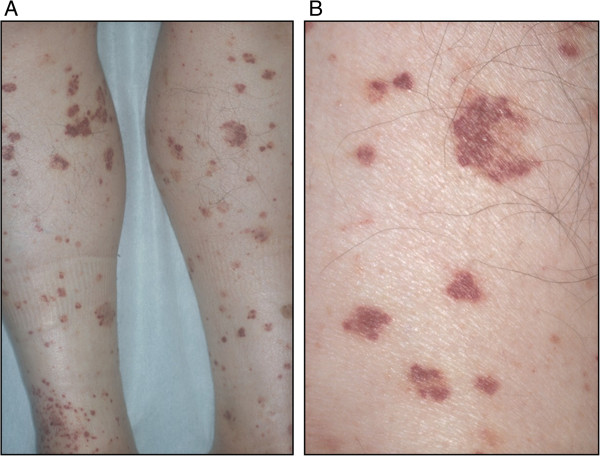Playlist
Show Playlist
Hide Playlist
Large Vessel Vasculitides: Takayasu
-
I Rheumatology 05 Vasculitis.pdf
-
Reference List Pathology.pdf
-
Download Lecture Overview
00:01 Takayasu. Young, Asian lady walk into the door. 00:06 You start to check for her pulses. Radial, nothing. Carotid, nothing. 00:15 You notice pulseless disease. 00:18 So, what's going on here with this large vessel issue? It is going to be granulomatous, intense inflammation, 95% of the time, the blood vessel is starting to be affected. 00:30 The large ones are going to be the branches of the arch of aorta. 00:35 So, you're gonna be focusing upon asymmetric blood pressure, pulseless disease. 00:42 Diagnostically, what are you gonna do? Well, in many of these issues with the blood vessel, you're gonna find it elevated erythrocyte sedimentation rate. 00:53 So, that doesn't tell you much apart from the fact that okay, maybe a patient has vasculitis. 00:58 An MRI and MRA, what are we looking for in geography or our imagining study? It's the blood vessels coming off the -- you're gonna focus upon the branches of the arch of aorta. 01:10 So now, as I told you, the patient, young, Asian, less than 40, lady, doesn't have pulses in the carotids, and may not have pulses in the radial cuz of issues of vasculitis in maybe left subclavian, maybe off the carotid. 01:29 Management, high-dose steroids, but even that could be unaffected or ineffective. 01:39 And so, therefore, you might be thinking about repeat, repeat, repeat coronary arterial bypass grafting or CABG. 01:46 We're going to our next major large vessel disease. 01:51 Here, we have giant-cell arteritis, aka temporal arteritis. 01:55 Here's this patient walking through the door. 01:58 Well, she's complaining of pain, maybe in the temporal region and maybe in the jaw area. 02:04 In addition, the neck and shoulder or maybe the hip may be involved. 02:08 In other words, there is an association with polymyalgia rheumatica, a connective tissue disease. 02:13 A high percentage of patients, around 50%, usually will be older women about 67 years old. 02:20 What you're worried about with temporal arteritis or giant-cell arteritis is the branch of the internal carotid known as the ophthalmic branch. 02:28 And if not careful, that ophthalmic branch with that severe vasculitis will then undergo or may lead into blindness, permanently, in that patient. 02:40 What do you do for diagnosis? You're gonna do a biopsy. 02:46 And in that biopsy, you're then going to find a granuloma. 02:50 You find granulomatous changes and giant cell and mononuclear infiltration of the vessel wall. That must be understood. 02:59 And you'll also find an ESR, but I told you the elevated ESR is nonspecific. 03:06 You must immediately begin the patient on corticosteroids cuz if you don't, please focus on the fact that the ophthalmic branch will undergo severe vasculitis and end organ here would be the eyes, and therefore resulting in permanent blindness. Giant-cell arteritis. 03:26 Let me show you a picture here. On the left, of the branches of the aorta. 03:33 Those arrows are pointing to areas of the blood vessel in which there's no perfusion. 03:40 If you take a look at the arch, there's blood passing through there and the areas that are less opaque and more lucent, in other words, the areas that look more black, are the areas in which no blood is passing through. 03:58 So, off the arch, let's say that it's the carotid, if there's no blood passing through the carotid, then the patient or you, the sign is no pulse. 04:09 Welcome to Takayasu. On the left, narrowing. Treatment please? Corticosteroids. If that doesn't work, maybe perhaps you need to do some bypass surgeries. 04:22 The picture on the right is the forehead of your patient and this elderly lady, take a look at the hair here, grayish. 04:32 Things like that that you wanna observe. 04:34 And specifically, you're looking at branches of the temporal artery that has been affected. 04:40 And this giant-cell arteritis or temporal arteritis undergone inflammation. 04:44 Remind me again, if left untreated, not given steroids, what may then happen? Correct, permanent blindness. 04:53 Look at the picture on the right depicting giant-cell arteritis.
About the Lecture
The lecture Large Vessel Vasculitides: Takayasu by Carlo Raj, MD is from the course Vasculitis: Basic Principles with Carlo Raj. It contains the following chapters:
- Large Vessel Vasculitides - Takayasu
- Large Vessel Vasculitides - Giant-cell Arteritis
Included Quiz Questions
A young Asian woman has pain in the upper extremities and her radial pulse is absent on one side and weak on the other. Given the most likely diagnosis, what artery is most frequently involved early on?
- Subclavian artery
- Radial artery
- Abdominal aorta
- Axillary artery
- Pulmonary artery
Which of the following statements regarding Takayasu arteritis is NOT correct?
- It most commonly affects postmenopausal women.
- It is an uncommon chronic vasculitis of unknown etiology.
- The aortic arch and its branches are most commonly affected.
- Imaging studies are essential for establishing the diagnosis.
- The mainstay of therapy is systemic glucocorticoids.
A 70-year-old woman presents with a severe right-sided headache and jaw claudication for the past several weeks. She also complains of recent fatigue. Which of the following tests is the most appropriate next step in diagnosis?
- Erythrocyte sedimentation rate
- Magnetic resonance imaging
- Brain CT scan
- CBC
- Chest X-ray
Customer reviews
5,0 of 5 stars
| 5 Stars |
|
5 |
| 4 Stars |
|
0 |
| 3 Stars |
|
0 |
| 2 Stars |
|
0 |
| 1 Star |
|
0 |




